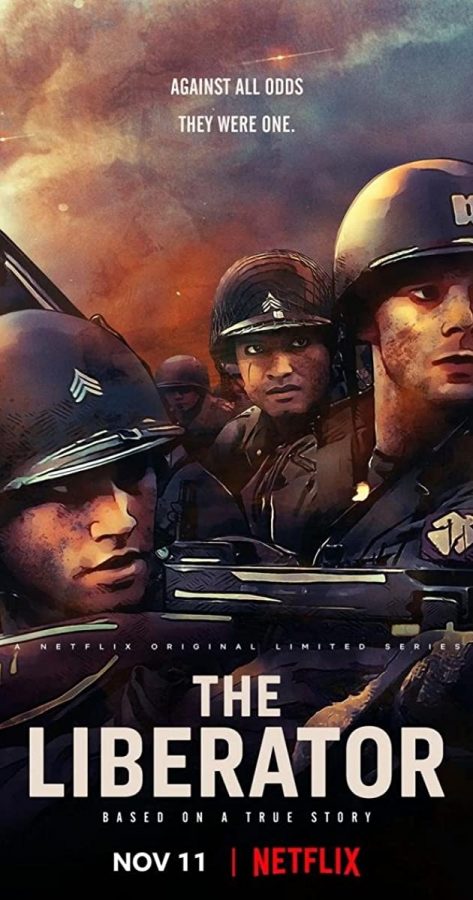“The Liberator”: A captivating and innovative, yet artificial portrayal of World War II
November 19, 2020
This Veteran’s Day Netflix released “The Liberator,” a four episode mini-series marked by its unique integration of computer animation and live-action footage.
The story of “The Liberator” is based on a real one: the story of U.S Army Officer Felix Sparks (Bradley James) and his unit, the Third Battalion of the 157th Infantry Regiment of the 45th Division during World War II.
This unit– nicknamed the “Thunderbirds”– consisted of an unlikely mix of white cowboys, Mexican Americans and Native American soldiers, who spent 500 days in combat.
The series touches on racial issues of the past; the Thunderbirds were composed of a mix of races who at the time, were not permitted to enjoy a drink at a bar together.
Yet the Mexican American and Native American soldiers still risked their lives for the U. S., fighting for a country that did not extend them the same rights and privileges as their White peers.
The discriminatory practices of the era are illustrated through the character Samuel Coldfoot (Martin Sensmeier), a Choctaw American who was repeatedly passed over for promotions on the basis of his race.
Yes, the plot is a bit cliche: strangers form a brotherhood in the warfield, an unassuming group with the odds stacked against them, who miraculously turn into heroes.
That being said, all adaptations of true stories are a little cheesy because they are meant to inspire their audiences.
The animation is one of the series’ distinguishing components, giving it a picturesque, graphic novel-like aesthetic, allowing the story to feel dramatically dreamlike and eloquently old-fashioned.
But, to me, the animation was a hit and miss. Yes, the concept is cool, and it adds a flair to the series’ jaded storyline, capturing the audience with this technological innovation while also setting a precedence for future projects.
And yet the animation desensitizes the emotional response to the tragic events of “The Liberator,” allowing them to feel surreal and artificial, which clearly wasn’t the intended reception to this adaptation of a true war story.
The series elegantly paints a portrait of bravery and brotherhood through the use of unique stylistic elements, while also highlighting institutionalized racism and the perseverance of soldiers.
“The Liberator” is an interesting watch, though not the rawest portrayal of World War II’s unimaginable horrors.
4/5
























